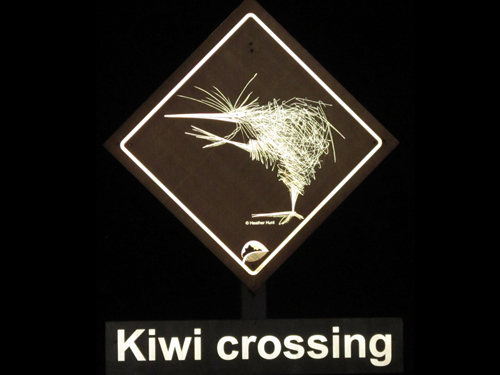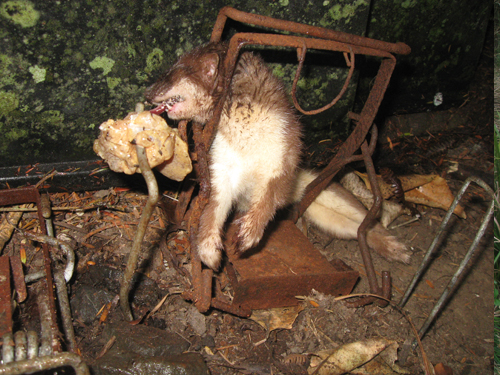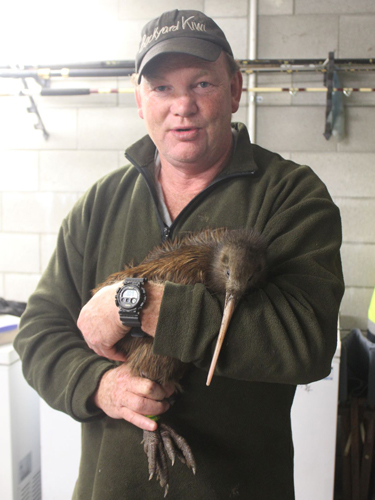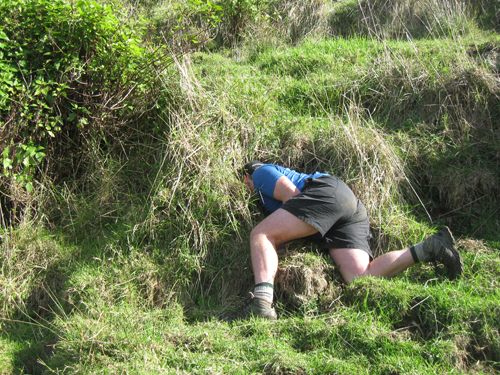2020 May report
Great to get the rain!
Thanks to everyone who came along Whangarei Heads Landcare Forum AGM 7.30pm June 9 at McLeod Bay Hall
WHLF is a crucial platform for the many Landcare groups and individuals at the Whangarei Heads and it enables much of the positive work being done to happen.
Kiwi Counting
We have just finished the first window for the formal kiwi listening survey but the heavy surf (noise) and easterly winds limited some of our 20 stations. To complete the 4 nights needed at each site we will use the second window (9-28 June). The recent crucial rain may also now spark up the breeding season and give us a more accurate kiwi count than the drought conditions. Thanks to all those hard working kiwi listeners!!! This annual survey during the breeding season is the best way we have to measure the long term effectiveness of our kiwi recovery and to date it has shown the huge success of the work. We will collate the data and report back on this seasons kiwi count after the 2nd listening window.
(Thanks to Maike Barteldres for sharing her photo of kiwi on the road)
NRC funding
The recent Whangarei Heads High Value Area confirmed a minimum of the same level of funding for BYK and WH weed action. Thank you to the rate payers of Northland! We will continue to use the funding effectively and efficiently.
Backyard Kiwi Predator Control Program :
There has been a real spike in catch numbers, including 3 stoats on Manaia which is very unusual. Two of these stoats were females (which are perpetually pregnant) so they would be responsible for another 15-20 stoats in the spring between them (see pic). The lull in trapping during lockdown may have allowed these stoats to penetrate further into the Heads than usual. We are planning another ground based 1080 pulse at Manaia in the spring which will control any stoats due to breed there.
May predator trap catches: Stoats 4, Weasels 8, Cats 3, Rats 99, Hedgehogs 32 and 7 possums.
What your radio tracked Backyard Kiwi have been up to:
With the extremely dry conditions kiwi have struggled in this season. None of the dads are nesting yet.
We recently released a kiwi that had been recovering at the WNBRC to Parua Bay. This female kiwi was extremely skinny but very healthy otherwise and had come from the Hauraki gulf island creche – Moturoa which has been hit particularly hard by the drought. When I released her into a safe wetland area on Saturday night she got straight into feeding up in the moist conditions and within 5 minutes was calling to see if there were other kiwi about (no reply). Her activity since then has been good and she stayed out of the heavy rain tucked up safe and dry in pampas bush. Her radio transmitter is only temporarily attached so we can make sure that she settles in well and she is certainly doing that so far (see pic).
Whangarei Heads Kiwi radio monitored kiwi:
Kaitiaki – After moving to the pines east of Owhiwa road before lockdown I couldn’t find her even after a wide search. Then I got a weak signal well south of where she had been and I found her dropped radio transmitter on the northern boundary of Ody’s farm at Mt Manaia. She had travelled south from Owhiwa road, through the built up Parua Bay village area and out onto the peninsula. She may have been using the much quieter roads during the lockdown. This is the first time we have tracked a released kiwi heading from Parua Bay to the Heads itself. There have been plenty of kiwi doing the opposite and moving north from the Heads over the years. Her transmitter was only attached with a temporary band so we could monitor her for a month or so to see where she settled.
Jemima – Likewise after much searching for this young girl I got a weak signal from Mt Tiger coming from the area well north of the Taraunui Road area that she had been in. I gave Cam McInnes from Kiwi Link a call and he has now tracked her to the Whanui Pine block there and is monitoring her.
Hancock – She has been moving between the top end of Kohinui Valley, between Owhiwa and Te Rongo Roads and Kerry Martin’s pines East of Owhiwa Road. Her nightly activity is 12.5 hours.
Darwin – Still no signal since 4/12/19, looking like transmitter failure.
Whitu – Up on the face above the freezing works at Reotahi, with 11.5 hours nightly activity. I did his 6 monthly band change and he was 2250g and in good condition.
EB – In the pampas in the recently milled pine block, Kerr road. Activity 12 hours.
Pakipaki – In the pampas in the horse paddock at McLeod Bay, 11.5 hours activity.
Ross – At the top end of Pepi road. Activity 12.5 hours.
Teina – He is still well settled in the young pine block east of Owhiwa road, his nightly activity is slowly going down with the odd 7 hour night so hopefully he is thinking about nesting.
Malaika – This young girl has stayed at Kerry Martin’s pine block for the past month. Her nightly activity is 13 hours.
Harikoa – Still in the wetland at the NE end of Campbell road, 12 hours activity. .
Wally – In his usual area in the rushes on the Pataua estuary edge at the northern end of Campbell Road. 12 hours activity
Awhi – Still at the end of Campbell road down near the Pataua estuary. Her activity is 11.5 hours.
A pet dog at Rarangi Heights (off Kerr rd) found the long dead remains of a kiwi. The body had no head or feet and just one leg, no ID chip but it could have easily fallen out of remains if it ever had one. The dog owner understood that next time it could be a live kiwi (soon to be a killed kiwi) that her dog comes across and brings home. Please keep our dogs under control – it is always very sad for all concerned when dogs are not under control and find themselves a kiwi!.
Rarewarewa/Purua kiwi: (for ONE program funded by Kiwis for kiwi)
After not being able to access these kiwi during lockdown it was a bit of a rush to catch up on the transmitter changes that were due before breeding starts.
Nick -12 hours activity. In tomo in Lovell’s bush. New transmitter fitted, 2550g, good condition. Female deeper in tomo – left unhandled (because females could be gravid -pregnant- at the moment)
Sancho – 12 hours activity, in rank kikuya north of quarry. New tx fitted, 2550g good condition
Moeahu – 11 hours activity but down to 8 hours on one night. NE reserve.
Kimposter – 12.5 hours activity. West of his usual area in Ray’s territory by the big slip. New tx 2400g, Med-good condition .
Ngutu Roa – 11.5 hours activity. Usual area SW reserve. New tx, 2100g , poor-med condition. Female deeper in burrow left unhandled.
Ngaro – 12 hours activity. in rank kikuya just inside reserve above the airstrip, new tx, 2300g, good. With female – left unhandled. The new male found in March up behind Lovells’ Irvine road woolshed has been monitored by Julia from Doc over the lockdown.
Gorgeous – I found this guy in a pampas bush in the paddock north of McGrath’s quarry. When I scanned him his ID chip showed 69b3a44. He was previously found by Pete Graham (who inserted the chip) and his kiwi dog Manu (who showed Pete where the kiwi was) back on 18/5/2007. He was a chick of 955g then. So it is good news that he is still going strong 13 years later and is a good dad to have for our ONE program. He is now 2500 g, in excellent condition and has a transmitter fitted (see pic). He was with a female but she was left unhandled.
Cheers Todd

















